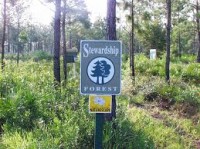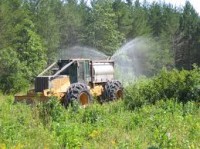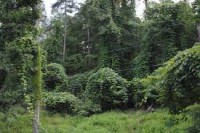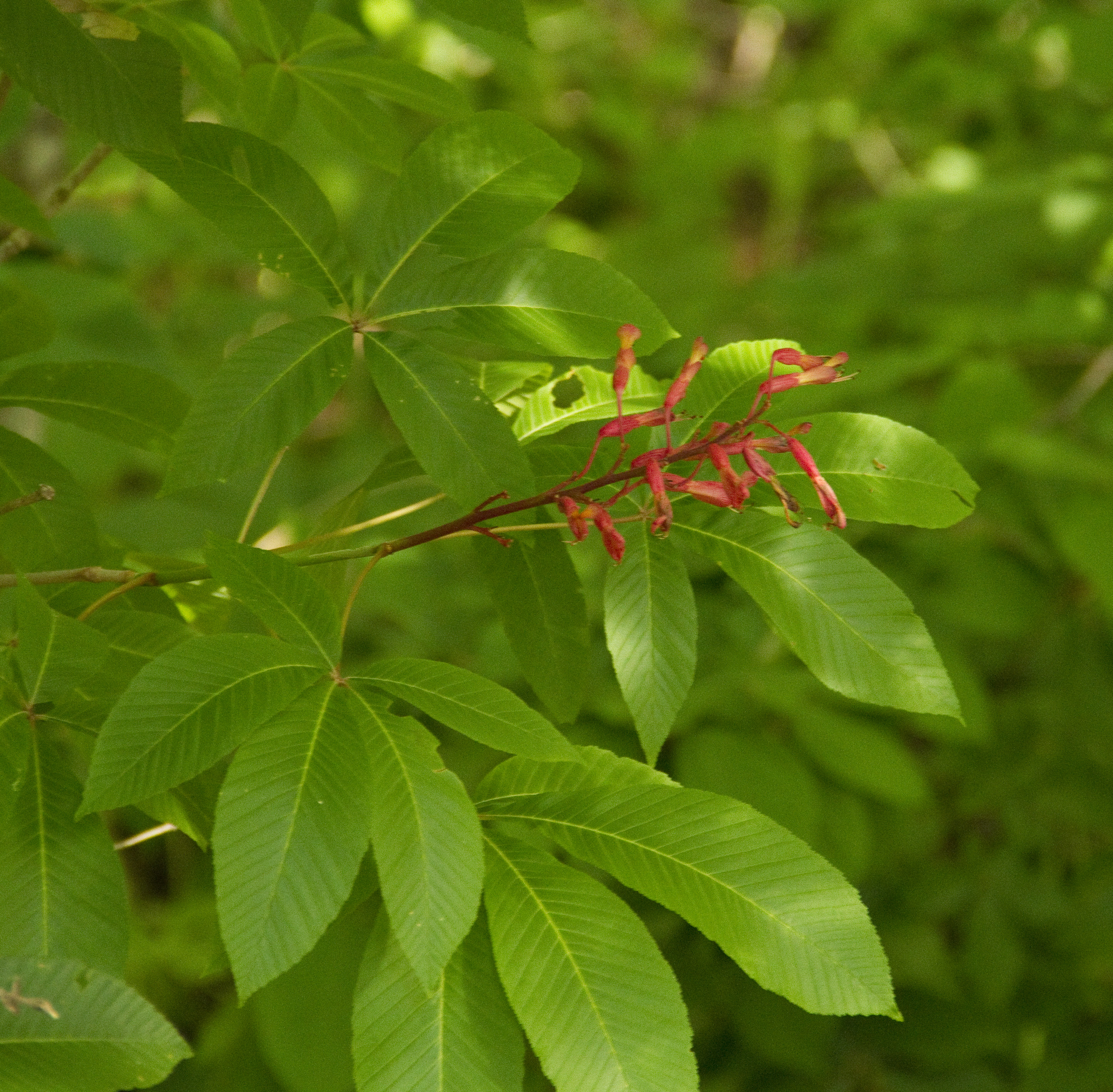
Sunflowers should be planted between April 1 and June 30 in Alabama.
MONTGOMERY-Planting for wildlife is often seen as simply planting a green field with cool-season crops, such as wheat, oats  and clover, in the fall just prior to the opening of deer season. These plots are easy to plant and maintain, and do a great job of easing the stresses of food shortages after the fall mast is essentially gone. They also serve as great areas for attracting wildlife for harvest opportunities during hunting season. However, these plots typically do very little to aid in the overall growth and development of wildlife on a given property.
and clover, in the fall just prior to the opening of deer season. These plots are easy to plant and maintain, and do a great job of easing the stresses of food shortages after the fall mast is essentially gone. They also serve as great areas for attracting wildlife for harvest opportunities during hunting season. However, these plots typically do very little to aid in the overall growth and development of wildlife on a given property.
In the South, the most stressful time of the year for most wildlife is the hot, dry period of late summer through early fall. This also is when many species are actively growing, raising young, and most in need of the benefits of good nutrition. Availability of quality native browse is limited this time of year on most properties, especially areas dominated by closed canopy forests.
 Landowners and wildlife managers interested in minimizing the negative impacts of these seasonal highs and lows in food availability and quality should focus their efforts on management of the native food plants. Well-managed pine stands, which are adequately thinned and burned on a three- to five-year rotation, provide great forage and nesting opportunities for many species. Bottomland hardwood forests should be protected from fire and maintained for mast production in the fall and winter months. Less desirable trees within these stands, such as maple, yellow poplar, sweetgum and unproductive oaks, can be removed to allow more sunlight to reach the forest floor. Removing this competing vegetation frees up resources for the more desirable trees in the stand and increases the site’s potential for browse production.
Landowners and wildlife managers interested in minimizing the negative impacts of these seasonal highs and lows in food availability and quality should focus their efforts on management of the native food plants. Well-managed pine stands, which are adequately thinned and burned on a three- to five-year rotation, provide great forage and nesting opportunities for many species. Bottomland hardwood forests should be protected from fire and maintained for mast production in the fall and winter months. Less desirable trees within these stands, such as maple, yellow poplar, sweetgum and unproductive oaks, can be removed to allow more sunlight to reach the forest floor. Removing this competing vegetation frees up resources for the more desirable trees in the stand and increases the site’s potential for browse production.
Besides forested stands, a very important component to consider when managing wildlife habitat is wildlife openings. For deer and turkey management, having at least 1 to 5 percent of a property’s total acreage in wildlife openings should be a goal. The openings should be well distributed on the property and can be managed to increase available natural forage and plant diversity by disking, mowing and burning, or they can be planted with agricultural crops as part of an overall habitat management plan.
Wildlife openings planted with warm-season crops can provide high-quality forage during the most stressful and beneficial period of summer. Many of the commonly planted warm-season crops can last through early fall, which can provide hunting opportunities as well. However, planting and maintaining warm-season crops often presents several hurdles and challenges that cool-season crops do not.
In most areas of the Southeast, especially where deer numbers are high, openings of less than 3 acres should not be planted with warm-season crops. Deer will overbrowse the crops before they are able to produce enough forage or seed to justify the expense of planting. Most warm-season crops are used by a variety of game species, such as deer, turkey, dove, quail and rabbits, as well as a host of non-game species. Planting at least one 3- to 5-acre plot per 100 to 200 acres of total acreage should provide a significant amount of supplemental forage and/or seed production.
 Another issue not often encountered with cool-season plantings that usually needs addressing in warm-season plantings is weed and grass competition. Using the right herbicide or combination of herbicides before and after planting can resolve most problems with unwanted weeds and grasses. A selective herbicide should be used for specific crops unless you are planting some of the Roundup Ready® crops. A non-specific herbicide, such as glyphosate, can be applied over the field prior to planting to eliminate some unwanted weeds and grasses. Allow all vegetation to brown before tilling the opening. This post-planting application can help to some degree, but it will not address the grass and weed seeds still present in the soil. Utilizing an appropriate pre-emergent herbicide before or immediately after planting can be very effective at combating the unwanted grass and weed seeds that have not germinated. This will allow the crop to get a jump-start over the competition, but may not be all that is needed.
Another issue not often encountered with cool-season plantings that usually needs addressing in warm-season plantings is weed and grass competition. Using the right herbicide or combination of herbicides before and after planting can resolve most problems with unwanted weeds and grasses. A selective herbicide should be used for specific crops unless you are planting some of the Roundup Ready® crops. A non-specific herbicide, such as glyphosate, can be applied over the field prior to planting to eliminate some unwanted weeds and grasses. Allow all vegetation to brown before tilling the opening. This post-planting application can help to some degree, but it will not address the grass and weed seeds still present in the soil. Utilizing an appropriate pre-emergent herbicide before or immediately after planting can be very effective at combating the unwanted grass and weed seeds that have not germinated. This will allow the crop to get a jump-start over the competition, but may not be all that is needed.
If weeds and grasses are still a problem after the crops are established, a selective herbicide may be needed. A grass specific  herbicide, such as sethoxydim or clethodim, can eliminate most grasses in non-grass crops, such as soybeans, lablab and sunflowers. They should never be used on fields planted with millets, sorghum or corn. These crops are species of grass and these herbicides will kill them. For these crops, several broadleaf specific herbicides are available to control weed competition. When using any herbicide, carefully follow all labeling instructions.
herbicide, such as sethoxydim or clethodim, can eliminate most grasses in non-grass crops, such as soybeans, lablab and sunflowers. They should never be used on fields planted with millets, sorghum or corn. These crops are species of grass and these herbicides will kill them. For these crops, several broadleaf specific herbicides are available to control weed competition. When using any herbicide, carefully follow all labeling instructions.
The following can be used as a warm-season crop-planting guide for several wildlife species. Soil from all areas to be planted should be tested well before planting. The recommended levels of lime and fertilizer should be applied according to the test results. Sites should be well-tilled prior to planting.
Warm Season Crop Planting Guide
| Species | Crop | Planting Dates | Seeding Rates | Planting Depth |
| White-tailed Deer | cowpeas | May 1 – July 15 | Broadcast = 45 lbs./acreDrill = 15 lbs./acre | 1 in. |
| lablab | April 20 – June 30 | Broadcast = 20 lbs./acreDrill = 10 lbs./acre | 1 in. | |
| soybeans | April 20 – June 30 | Broadcast = 60 lbs./acreDrill = 30 lbs./acre | 1 in. | |
| Wild Turkeys | chufa | May 1 – June 30 | Broadcast = 40 lbs./acreDrill = 25 lbs./acre | 1 in. |
| corn | March 15 – May 1 | Broadcast = 15 lbs./acreDrill = 12 lbs./acre | 1 in. | |
| Mourning Doves | browntop millet | April 1 – August 15 | Broadcast = 25 lbs./acreDrill = 15 lbs./acre | ½ in. |
| proso millet | May 1 – June 15 | Broadcast = 30 lbs./acreDrill = 15 lbs./acre | ¼ in. | |
| sunflowers | April 1 – June 30 | Broadcast = 15 lbs./acreDrill = 4 lbs./acre | ½ in. | |
| grain sorghum | April 15 – June 30 | Broadcast = 15 lbs./acreDrill = 8 lbs./acre | ½ in. |
MEDIA RELEASE/ALABAMA DEPARTMENT OF CONSERVATION AND NATURAL RESOURCES/Chas Moore, Wildlife Biologist, Alabama Division of Wildlife and Freshwater Fisheries


